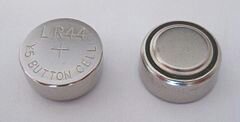Portable gaming in 1981 was limited to individually configured devices, most of them with a new look and feel to both confuse and amaze the child who just received the game. The Mattel

Dungeons & Dragons game is no exception.
This game is one of the earlier LCD based handheld games. During its heyday, most portable gaming devices used LED or VFD (Vacuum Flourescent Display) technologies. While those kind of displays are very bright and visible in the dark, they do consume a lot of power. For something intended to be small and easily snuck into the classroom at school… errr, I mean, conveniently portable, there is no room for batteries even as small as AAA. The minimal current draw of LCD displays allows games to be made that work on two tiny LR44s, or “button” batteries which are about one centimeter in size, each.

Just like LED and VFD displays of the day, gaming action was not derived from bitmapped displays producing any desired character shape within the limits of the display resolution. LCD displays were more versatile than LED displays, but boasted the same capability a VCD had when displaying well defined screen characters, even if they were only in black & white. Each character element in the game has a fixed design and placement on the screen. Even though the benefits consisted of crystal clear character designs which can be visually sharper than today’s high resolution displays, the rigid placement of the characters made it difficult at times to follow the gameplay.
Although the shape and physical format of the Mattel Dungeons & Dragons game was new for the day, the gameplay was not. Years before, there was a rather fun, albeit simplistic computer game known as “Hunt the Wumpus.” The object of this Dungeons & Dragons game is similar. You start off in a room having up to four exits in different directions. The rooms are spread across a 10×10 grid of dungeon floor defined by row and column names consisting of letter/number combinations from A0 to J9. You must move in a selected direction based on the position of an on screen arrow. You choose the arrow direction by repeatedly pressing the “Cursor” button. Then you move to the next room in the selected direction by pressing the “Move” button. Sounds simple enough, right? Well, there are elements of action in the game, too.

As you go from room to room, there may appear some indicators of a “pit” or “dragon” being nearby. Each hazard is indicated by a recognizable icon on the screen. When you see these indicators, it is a warning that in one of the possible directions out of the current room, you will find that hazard.
With the “pit” hazard, if you choose the wrong direction, you will fall into a pit. Unless you have, or find, a grappling hook, the game ends here and you’re stuck in the pit forever. Having a grappling hook (as indicated by the hook icon) saves you and you will automatically get out of the pit to continue your journey.
Handling the dragon is a little more complex. When you see the dragon icon, it indicates that a dragon is in one of the connected rooms. You must decide to flee (go back in the direction you came) or fight the dragon. To flee, simply go back the way you came (unless you fell into a pit coming to the current room).
To fight a dragon, move the arrow to the direction you think would lead you to the dragon and press the “Attack” button. This will initiate the attack. If you chose correctly, the dragon dies and you are victorious. If not, that means you have alerted the dragon to your presence and the dragon will kill you!
But wait… there’s MORE!
Sometimes, you may come across a flying bat. This can be treated like any other hazard in that if you go in the wrong direction, the bat will get you. But it WON’T kill you. Instead, it will grab you and fly you to another part of the dungeon, to a random location. It may even drop you in a pit! Hopefully, you’ll have your grappling hook. Also, if you are in a room where it indicates the bat is nearby, don’t sit still too long. The bat can still swoop in and grab you if you don’t move soon enough.
I’ve always tried to play this game using my memory alone to track the location of everything, not realizing I’d have to memorize the contents of up to 100 rooms. This explains that the only way I ever won this game was by sheer luck that the dragon was near my starting room. It would make more sense, strategically, if you took pen to paper and mapped out the game as you go.




Feel free to checkout my companion app!
https://github.com/BussardRamjet/companion/releases
It is still early days but it helps a ton!